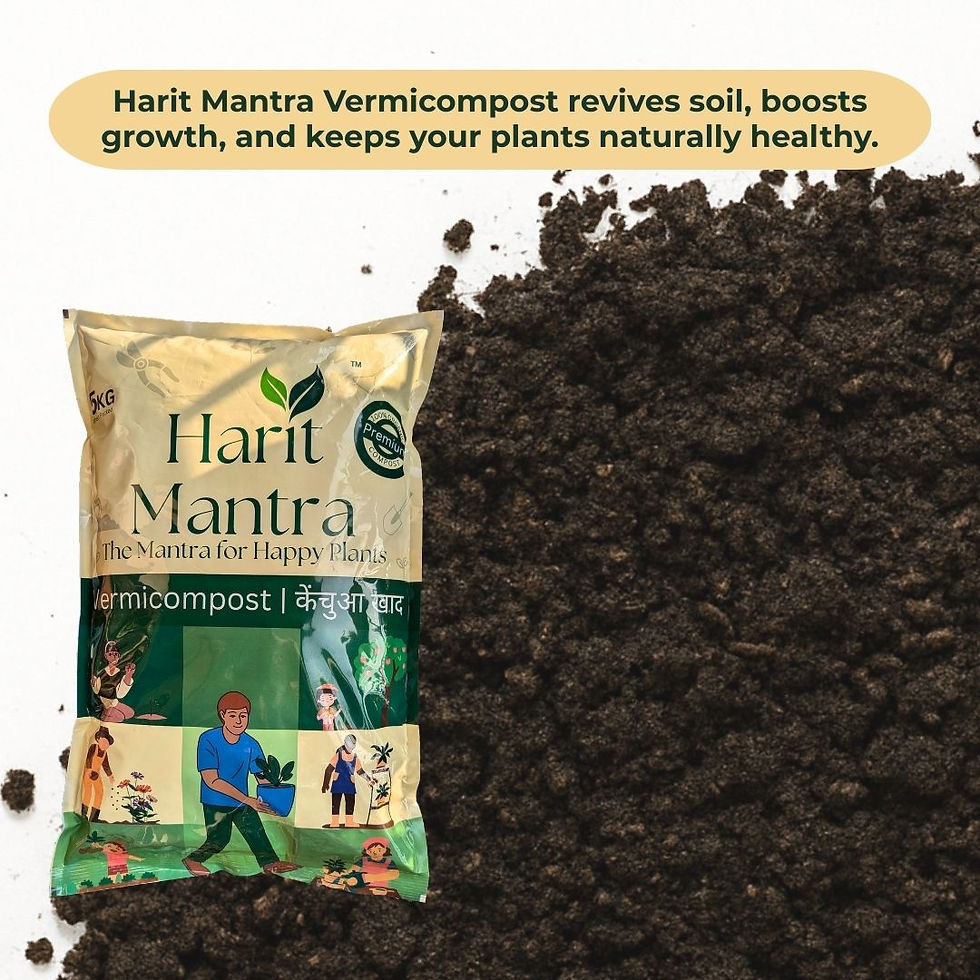How to Make Your Flowering Plants Bloom Faster
- Paramjeet Dhillon
- Oct 6
- 2 min read

Introduction
Flowering plants add color, fragrance, and life to any home or garden. But sometimes, even healthy plants take forever to bloom—or produce very few flowers. The secret to a vibrant, blooming garden isn’t magic—it’s proper care, nutrition, and attention.
At Harit Mantra, we guide plant lovers on how to encourage faster blooms naturally using organic fertilizers, proper watering, and sunlight management.
1. Choose the Right Plant Varieties

Not all flowering plants bloom at the same speed. Some varieties naturally take longer to flower.
Tips:
Select early-blooming plants like marigolds, hibiscus, or petunias for quick results.
Indoor flowering plants, orchids, peace lilies, and kalanchoes respond well to proper care.
2. Provide Adequate Sunlight

Flowers need energy to bloom, and sunlight is their fuel.
Tips:
Most flowering plants need at least 6 hours of sunlight per day.
For indoor plants, place them near south or west-facing windows.
Rotate pots to ensure all sides get light evenly.
3. Water Properly
Watering affects flower production directly. Too much or too little water can stress the plant.
Tips:
Water consistently, keeping the soil slightly moist but not soggy.
Avoid wetting flowers directly to prevent fungal infections.
Check the soil before watering; the top 1–2 inches should feel dry.
4. Feed Your Plants with Organic Fertilizers

Nutrition is key to flower production. Plants need phosphorus-rich fertilizers to encourage blooming.
Tips:
Use organic fertilizers like bone meal, compost, or Harit Mantra’s natural plant feed.
Feed every 2–3 weeks during the flowering season.
Avoid excessive nitrogen, which promotes foliage but reduces flowers.
5. Prune Regularly

Pruning keeps plants healthy and redirects energy to flower production.
Tips:
Remove dead or yellowing leaves.
Cut back spent flowers (deadheading) to encourage new blooms.
Trim overly long stems to maintain plant shape.
Conclusion
With the right sunlight, watering, nutrition, and pruning, your flowering plants can bloom faster and more abundantly. Paying attention to their needs ensures a garden full of vibrant, healthy flowers.



Comments